Case Studies.
Add Case Study
Our Case Study database tracks 18,927 case studies in the global enterprise technology ecosystem.
Filters allow you to explore case studies quickly and efficiently.
Download Excel
Filters
-
(5,794)
- (2,602)
- (1,765)
- (764)
- View all
-
(5,073)
- (2,519)
- (1,260)
- (761)
- View all
-
(4,407)
- (1,774)
- (1,292)
- (480)
- View all
-
(4,158)
- (2,048)
- (1,256)
- (927)
- View all
-
(2,488)
- (1,262)
- (472)
- (342)
- View all
- View all 15 Technologies
- (1,732)
- (1,626)
- (1,605)
- (1,461)
- (1,423)
- View all 42 Industries
- (5,782)
- (4,114)
- (3,091)
- (2,780)
- (2,671)
- View all 13 Functional Areas
- (2,568)
- (2,482)
- (1,866)
- (1,561)
- (1,537)
- View all 127 Use Cases
- (10,333)
- (3,499)
- (3,392)
- (2,982)
- (2,593)
- View all 9 Services
- (503)
- (432)
- (382)
- (301)
- (246)
- View all 737 Suppliers
Selected Filters
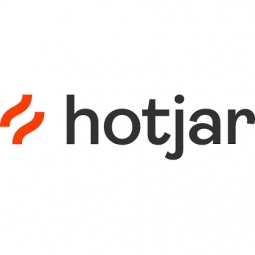
|
Boosting Conversions by 43%: A Case Study on Re:member's Use of IoT
Steffen Quistgaard, a Senior Marketing Specialist at re:member, a trademark of Entercard, one of Scandinavia’s leading credit market companies, noticed an unusual increase in users bouncing off re:member’s credit card application form. Despite having traditional analytics tools like Google Analytics and their custom data warehouse, these tools were not providing a complete picture of the user journey. The main challenge was that these tools could not visually show what went wrong. The issue was particularly noticeable with traffic arriving from affiliates, which are sites that compare different types of credit cards. Despite being a significant traffic source for re:member, the high bounce rate from these users was a concern. Google Analytics could show what was happening on re:member’s application form, but it couldn’t explain why affiliate traffic was bouncing.
|
|

|
Ensuring the safety and security of the pharmaceutical supply chain with IoT shi
The company was looking to cover all transportation legs of the supply chain: • The transport of partially completed pharmaceutical products from manufacturing facilities to processing centers • The shipment of finished products to regional warehouses • The delivery of the finished products to local distributors Although pilferage, hijacking and product tampering were ongoing problems, the containers couldn’t be sealed because the cargo had to be accessible for random checking at government checkpoints.
|
|

|
Coast Revolutionizes Credit Underwriting for the Fleet Industry
Coast needed an end-to-end solution to quickly launch their fleet cardCoast identified a gap in the operations of the fleet industry and launched with the goal of having a credit product that was intuitive and easy to use while saving the business money. Unlike traditional players, they wanted to put the power into their customers’ hands, giving them the ability to set limits, issue cards, and authorize payments in just a few clicks. They also wanted the entire process to be fast and easy for their customers whether they had 5 or 500 vehicles to operate. Coast needed an end-to-end onboarding and underwriting solution to accomplish this goal.
|
|

|
CN Helped Pine Printshop with a Responsive and Top-notch E-commerce Portal
To digitally expand their business, Pine Printshop was looking for a catalog-based site that would help people buy ready-made products (e.g. apparels, board pins, stickers, etc.) and even allow customers to personalize their own t-shirts, caps, and hoodies.
|
|

|
Smart Ccondition Monitoring Saves USD 30 Thousand In A Forging Unit
The 1000 Ton main forging press had a 75 HP motor and fed a trimming machine. The motor pulley combination was situated on top of the Press at a height of about 15 feet thereby reducing its access for routine maintenance. The company found difficulty ensuring constant uptime of the Press.
|
|

|
AI Conveyor Inspection with Wahtari nCam |
|

|
Cloud Migration: The Wallace Group's Journey to Efficiency and Cost Savings
The Wallace Group, a recognized geosystem expert in the Pacific Northwest, faced a significant challenge when their servers crashed in fall 2020. The crash highlighted the need for a more reliable and efficient system to manage their projects, create invoices, and process payroll. The company was also grappling with the challenge of effectively supporting their distributed workforce due to the COVID-19 pandemic. Their on-premises solution was not fully equipped to support their teams when they had to close their offices temporarily. The company was also burdened with the cost of maintaining in-house hardware, including the purchase of a new server every five years and the cost of outsourcing frequent and expensive system updates to their external IT vendor to keep their systems secure and up-to-date.
|
|
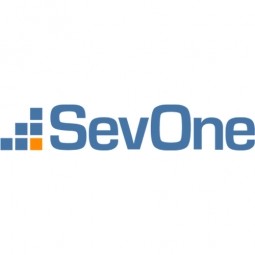
|
Major IT Services Provider Implements Sevone
The legacy system lacked the automation, scalability, and flexibility the ISP’s clients required. For instance, the ISP team had to manually group resources such as servers, routers, switches, load balancers, and firewalls to create network maps. It took so long that the maps were usually outdated by the time they were completed.The IT services provider focused on several big problems it needed to fix, among them:Outdated network monitoring: Its legacy network monitoring system, initially deployed in 2002, could not deliver the dynamic monitoring and management capabilities the client now required.Lengthening MTTR times: Without granular, real-time network visibility, the network operations team was troubleshooting problems by manually piecing together items such as log files. Fixes that should have taken minutes were taking hours.Costly SLA violations: The ISP incurred significant financial penalties any time it missed a service level commitment for the government agency customer, and they were beginning to add up.Staff morale problems: The legacy system was causing frustration among the ISP’s network ops team. Being thrown repeatedly into high-pressure situations and trying to fix problems while essentially half blindfolded was taking its toll.
|
|
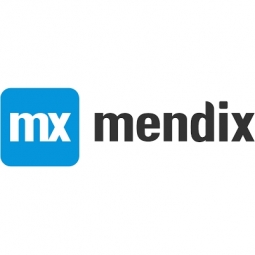
|
ProRail's Transformation: Leveraging Low-Code Automation for Efficient Railway Operations
ProRail, a company assigned by the Dutch Government to maintain over 6,800 km of their national railway, faced a significant challenge in managing its complex operations. The company's mission was to ensure high-quality, safe, on-time, and convenient passenger and freight rail travel in the Netherlands. However, the logistical challenges were immense, requiring the company to maintain a high-quality workforce and systems. The company was organized into three infrastructure management organizations, each with its own set of responsibilities. The IT department was responsible for the processes that enabled the railway network to operate properly. However, the company's core systems operation was sophisticated and of high importance, requiring a substantial amount of IT oversight. At the same time, the business was constantly generating new ideas to create efficiencies in their processes, which often led to a growing backlog and a proliferation of Shadow IT.
|
|
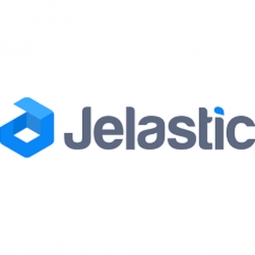
|
Sharktech's Transition to Cloud Services Powered by Virtuozzo
Sharktech, a hosting provider with a 20-year history, had built a reputation for its service quality, network expertise, DDoS mitigation, and high-quality support. The company, headquartered in Las Vegas, offers a range of hosting services from datacenters in Los Angeles, Denver, Chicago, and Amsterdam. Its clientele mainly consists of small and medium-sized businesses, including many VPN and game service providers across the U.S., Europe, and China. Despite the prevalence of cloud services, Sharktech had not ventured into this domain until 2019. The delay was due to the company's stringent requirements for performance, reliability, and support, which they felt were not met by the existing cloud platform alternatives.
|
|

|
Lendi's Transformation into a Data-Driven Business with Fivetran
Lendi, an Australian mortgage broker with over $12 billion AUD in home loan settlements, was facing a significant challenge in its data management. The company's business model, which involves offering customers a choice of over 2,000 loan products from more than 40 lenders, relies heavily on delivering the right experience to the right person at the right time on the right digital platform. This requires accurate insights into borrowers' needs and preferences, which in turn requires tapping into behavioral data on third-party engagement platforms such as Facebook, Google, and Bing. However, the data from these platforms were siloed and did not integrate easily. Even when the data could be brought into the same repository, the data structure was often inconsistent, necessitating data cleaning before it could be used. The responsibility of ensuring that stakeholders across the company could analyze and create actionable insights from this third-party data fell to Lendi’s Data Architect, Daniel Deng.
|
|

|
Creating an Unrivaled Customer Experience with AI: A Case Study on Eurocell
Eurocell, the UK’s leading manufacturer, distributor, and recycler of UPVC window, door, conservatory, and roofline systems, faced a challenge in harnessing their vast amounts of data to provide customers with an unrivaled customer experience. They aimed to fully personalize every single customer touchpoint, improving their understanding of their customers and how they communicate with them through their digital channels and branch teams. This need intensified during the COVID-19 pandemic as their e-commerce sales rapidly increased. They recognized that artificial intelligence (AI) could empower them to deliver on their strategic goal, but needed help distinguishing between their diverse customer-base in their SAP data, and understanding how their data could be used to create AI models.
|
|
---nasdaq--amzn_14.jpg)
|
Salesforce DMP Leverages AWS for Efficient Data Processing and Enhanced Customer Engagement
Salesforce DMP, a leading data management platform, is embedded within every digital interaction between its clients and their consumers. It collects, stores, and makes every piece of audience data continuously available to its clients, managing more than 10 petabytes of on-demand data. This comprehensive data collection approach provides clients with greater accuracy and sophisticated segmentation for targeting and analytics. However, this approach puts enormous demands on the Salesforce DMP system to quickly and efficiently process massive quantities of data. Fast performance and unlimited scaling capacity are crucial to deliver both real-time personalized experiences to consumers and data-driven insights to clients. Salesforce DMP needed tools to ensure it could deliver high return on investment to its clients while continuously developing and bringing new platform features to market.
|
|
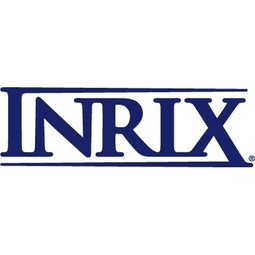
|
Transport Scotland Leverages Big Data for Improved Traffic Management
Transport Scotland was seeking to improve its real-time traffic information and network management capabilities. The agency was interested in third-party big data sources but found that many providers only offered access to the data without a user-friendly interface for extracting value from it. The challenge was to find a solution that not only provided access to comprehensive traffic data but also offered an easy-to-use platform for analyzing this data. The agency was also looking to reduce its reliance on roadside infrastructure for traffic monitoring, which was concentrated in densely populated areas and lacked coverage in more remote parts of the country.
|
|
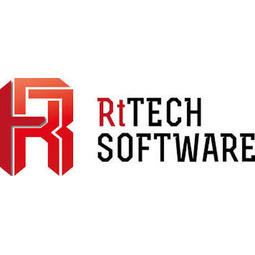
|
Maximizing Plant Utilization
While Argyle Diamond Mine had an existing delay accounting system that was developed in-house, the challenges of a legacy system were exasperated by the departure of the in-house developer. As a result, the company struggled to remain up-to-date with the changes in the mining process along with advances in software capabilities.Due to changes in mining operations, a large number of equipment events were recorded as text data. This made it difficult to search for trends since the system was dependent on user input, which was not consistent across each user.The challenge for Argyle Diamonds was to determine which delay accounting system would be the best to implement given a limited budget and a well-defined set of needs: something scalable, capturing all delays at the plant level, with the ability to classify and search delay events.
|
|
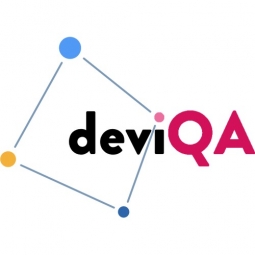
|
Revamping Test Automation for Sprinklr: A Case Study
Sprinklr, a tech platform designed to assist large brands in creating and managing social campaigns, was facing significant challenges with their testing processes. The existing test suite, developed by another company, was unstable and unreliable. Each test run resulted in a different number of randomly failed tests, making it impossible for the team to rely on the tests for release decisions. The tests were time-consuming, often taking several hours to complete. The architecture of the test suite was not scalable and was difficult to maintain for a large number of tests. Furthermore, the tests could not be integrated with other testing and DevOps tools. The challenge was to build a formal QA process, stabilize automated tests, increase their speed, redesign the architecture to support integration with third-party tools, and keep test documentation up to date.
|
|

|
Secure Serverless Compute Environment, Fewer Limitations
Serverless comes with its own set of challenges. Cold start times* — the several hundred milliseconds of latency required to execute an inactive serverless function — cause delays in the user experience that too often have a major impact on conversion rates. Add in limited observability and resource contention, as well as emerging security concerns about side-channel attacks, and it becomes clear why organizations hesitate to move business-critical workloads to serverless. What’s needed is a different approach to serverless that’s highly performant, developer friendly, and secure.
|
|

|
Deep Visibility and Actionable Intelligence Across Entire Global Infrastructure
The magnitude and complexity of the Infosys attack surface are significant; encompassing hundreds of thousands of endpoints spanning the entire globe, a highly mobile workforce, and huge data centers. Tasked with protecting the entire infrastructure, Salvi and his team have created a highly detailed framework that is used to model their environment: It utilizes a one-to-five scoring system to reflect the risk and readiness of each element across a selection of individual security-related functions.The magnitude and complexity of the Infosys attack surface are significant; encompassing hundreds of thousands of endpoints spanning the entire globe, a highly mobile workforce, and huge data centers. Tasked with protecting the entire infrastructure, Salvi and his team have created a highly detailed framework that is used to model their environment: It utilizes a one-to-five scoring system to reflect the risk and readiness of each element across a selection of individual security-related functions.In 2016, a review of the company’s infrastructure revealed a need to enhance protection against advanced persistent threats (APTs).
|
|

|
Ubisoft's Game Development Enhanced by Helix Core
Ubisoft, a leading producer, publisher, and distributor of interactive entertainment products worldwide, faced a significant challenge in managing its game development process. The company operates with each game development run as a separate entity, with teams ranging from 15 to over 150 developers. Each team is responsible for its tools and engine and has its own Helix Core server. The company's aim was to share tools and game engines across a range of game platforms, minimizing platform-specific changes needed in the final versions of production data. However, one of the main challenges was improving the sharing of tools between the development teams and enhancing productivity with new tools and processes.
|
|

|
Supercharging App Ordering with 5x Faster Scanning: A Case Study on Elektro-Material
Elektro-Material AG, a leading supplier of electrical components to Switzerland’s construction industry, faced a significant challenge with their EM order app. The app, which was a significant source of business revenue, had an open source scanning solution that customers used to scan barcodes from a catalogue or print barcode labels for products that did not have barcodes. However, customers found the scanning process slow, often taking several seconds to scan a single barcode. This delay resulted in a poor user experience and led customers to prefer reordering over the phone or at an Elektro-Material branch, especially for large orders. Additionally, some products only had serial numbers, which could not be captured by the open source scanning component of the EM app. These performance issues negatively impacted the customer’s purchase experience and reduced the number of orders originating through the app. Elektro-Material wanted to improve the app’s performance and increase customer stickiness.
|
|

|
Scaling Security Where Performance is Critical with Signal Sciences
Datadog is a monitoring and security platform service for cloud applications. Thousands of customers rely on Datadog to see metrics and events from software across their DevOps stack, such as cloud and security monitoring, alerts, logs, and more. Founded in 2010, the company rapidly scaled to serve its global customers by embracing the value of modern engineering and architecture practices.As the organization continued to grow, Datadog’s security team knew that their homegrown application security tools would not scale at the rate required to support a rapidly growing customer base. Adopting a WAF was the next move, but Datadog required one that provided flexibility in modern cloud architectures, supported a rapid CI/CD pipeline’s code changes and deployments without extensive tuning, and didn’t unnecessarily consume resources across security, SRE, and development teams.
|
|
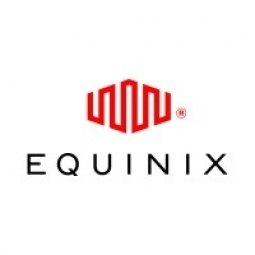
|
Revolutionizing Catastrophe Risk Modeling: A Case Study of Simplitium and Equinix
Simplitium, a UK company delivering ModEx, a catastrophe risk modeling platform for the (re)insurance industry, faced a significant challenge. The industry had been relying on outdated technology for the better part of three decades, using resource-heavy, legacy in-house hosting systems. These systems were used to analyze risks and potential damage of events such as natural catastrophes, helping (re)insurers calculate the financial implications to ensure they have enough capital to pay the claims and remain solvent. However, as cloud and hosted environments developed significantly, these legacy systems became increasingly inefficient and costly. Simplitium needed a reliable colocation partner with a strong presence in the insurance sector to help grow its customer base. They required a solution that would offer clients faster roll outs, lower costs, and zero downtime.
|
|

|
Revolutionizing Healthcare Claim Denials: Advent Health Partners' 500% Productivity Lift
Advent Health Partners, part of the Powered Health group, was facing a significant challenge due to rapid changes in healthcare regulations in the United States. The re-introduction of the Recovery Audit Contractor (RAC) program and the move to Electronic Medical Records (EMRs) had left many hospitals struggling to keep pace. This resulted in inefficiencies in the healthcare revenue cycle, with billions of dollars tied up in insurance claims denials. The situation was further complicated by the fact that hospital data, both structured and non-structured, was generally stored in siloes, with a lack of communication between different departments. Some processes were still heavily reliant on paper records. With claims-related data scattered across different locations and stored in multiple formats, it was very difficult for analysts to bring together all the information required to review a denied claim and decide whether there was a case for appealing the decision.
|
|

|
Industrial Generative AI for Next-Generation Race Analytics: A Case Study on Andretti Autosport
Andretti Autosport, a renowned racing team, was grappling with the challenge of effectively analyzing the massive amount of data generated during races, approximately 1 terabyte per car. The team was in search of innovative ways to leverage this data to gain a competitive edge and win more races. The primary objective was to upgrade their existing data analytics infrastructure by incorporating proprietary Zapata Generative AI techniques to drive their race strategy. The challenge was not only to manage and analyze the vast amount of data but also to make real-time strategic decisions based on the insights derived from the data.
|
|

|
Amplified Innovation Enhances Customer Relationships with Fireflies
Amplified Innovations, a company that partners with entrepreneurs and business professionals to foster personal and professional growth, was facing a significant challenge. The company was struggling with maintaining effective communication during client meetings. The founder, Sierra, found it difficult to take detailed notes while also staying engaged with clients and team members. This unproductive multitasking was affecting the quality of their customer relationships, as it is a known fact that only 2% of the population is proficient at multitasking. The challenge was to find a solution that would allow Sierra to actively listen to her clients without worrying about missing out on critical information due to note-taking.
|
|

|
Fireflies' AI Solution Enhances Efficiency in BukiHQ Media's PR Meetings
BukiHQ Media, a public relations consulting firm, was facing a significant challenge in managing client calls efficiently. The firm's publicist and client experience personnel, Michelle, found it difficult to take detailed minutes of meetings while also actively participating in the discussions. This was not only distracting and stressful but also led to the loss of important information. The inefficiency in handling client calls was impacting not just the growth of the business but also client retention. The firm tried using voice recording as an alternative solution, but it proved to be unreliable due to potential interruptions from messages or other calls. The inefficiency was also causing meetings to extend beyond their scheduled time, with around 15% of the time in meetings being wasted primarily due to inefficient meeting equipment.
|
|

|
Overcoming Language Barriers and Miscommunication: A Case Study on Tokenizz and Fireflies.ai
Tokenizz, a global real estate business, was facing significant communication challenges due to the multinational nature of its operations. Misunderstandings and conflicts were common due to language barriers and different linguistic norms. These issues were not only causing internal disruptions but were also costing the company financially, as miscommunication is known to cost small companies up to $420,000 per year. The company was losing track of conversations, finding it difficult to follow specific accents, and important information was getting lost in translation. Additionally, the process of manually taking notes during meetings was leading to further misunderstandings and disrupting the natural flow of meetings. Tokenizz was also struggling with task documentation and prioritization, which was causing both short-term and long-term problems.
|
|

|
Leveraging Fireflies to Minimize Client Calls and Enhance Efficiency at Clara
Clara, a legal command center for startup founders, was facing a significant challenge in managing client calls. The team found it difficult to share the details of a client call with everyone involved, leading to a time-consuming process where clients had to explain their problems to different team members. Additionally, taking detailed notes during a call was proving to be a hurdle. The act of writing everything down disrupted the natural flow of conversation and reduced meeting engagement, risking the loss of customer interest. Furthermore, the transcription software they were using did not integrate well with their CRM and video conferencing solutions, limiting their efficiency and workflow.
|
|

|
Enhancing Asynchronous Call Updates for Meaningful Gigs with Fireflies
Meaningful Gigs, a company that matches businesses with talented African digital designers, was facing a significant challenge in managing client calls. The team members were often unable to join live calls with current and prospective clients due to their busy schedules and off-site tasks. This resulted in missed opportunities to gather valuable insights and information from these calls, which could have been used to improve customer experience and propel the business forward. The team was aware of the importance of these calls and the potential loss of crucial information, but struggled to find an effective solution to keep comprehensive records of these long calls.
|
|

|
Enhancing Meeting Efficiency with Fireflies.ai: A Case Study on The Blogsmith
The Blogsmith, a SEO content writing agency for B2B technology brands, was facing a significant challenge in managing their client meetings. The majority of their business meetings were conducted via Zoom with a diverse range of clients, each with unique needs. The team found it increasingly difficult to keep up with the conversation while simultaneously jotting down key points and action items. This often resulted in missing out on crucial data discussed during the meetings, which could potentially impact the success of their projects. The company's founder, Maddy Osman, recognized the urgent need for a solution to this problem.
|
|

